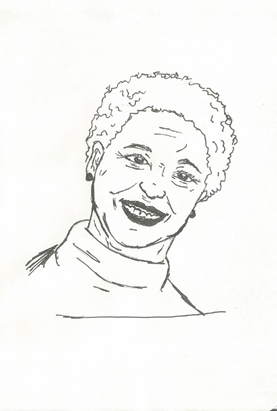by Carolina Parreiras and Renata Mourão Macedo Translated by Matheus Lucas Hebling
Originally published in Portuguese May 8, 2020 Link
If there is an almost immediate finding to be made – although little care is taken when it comes to the situation – it is that the COVID-19 pandemic has considerable consequences for all spheres of social life. In this sense, our proposal is, from the sum of our research experiences on technology and education, to draw lines of analysis that help to understand some of the developments of the processes of virtualization of education in basic and higher education. We start from a perspective that does not demonize or believe in catastrophic visions concerning technology, but that proposes to think about its many uses and the many contexts in which it is inserted, to better understand the challenges that these uses contain.
In this sense, we chose as the center of our argument the idea of digital inequalities, which refers to non-egalitarian processes of access, dominance (also referred to in the literature as digital literacy) and the use of information and communication technologies (ICTs), becoming It is essential to consider social markers of difference such as social class, gender, race, and generation, as well as other contexts and contingencies. Other possible names would be “digital inclusion” or “digital divide”. We work with the hypothesis that digital inequalities mirror, “replicate” (Oyedeme, 2012) 1 and reproduce broader social inequalities. It becomes necessary, then, to reflect on how this occurs in distance education (EAD), a measure announced by several state and municipal governments to continue the school year, given the impossibility of reopening schools and universities in the short term.
Although in the last 15 years, there have been considerable improvements in infrastructure and access to technology, we can say that Brazil still has high rates of digital inequality. The data from ICT Households helps to give an overview of the use of technologies in the country2. In the 2018 survey, 93% of households reported having a cell phone, 27% a laptop, 19% a desktop computer, and only 14% had a tablet. Regarding the presence of the internet in homes, 67% had some type of access, 62% by fixed broadband, 39% by cable or optical fiber, and 27% by 3G or 4G mobile connection. Regarding the reasons pointed out for the lack of connection, the financial factor (“because the residents think it is very expensive”) – 61% – and the inability to use the internet (“because the residents do not know how to use the internet”) stand out. – declared by 45% of the survey participants.
What these data show is that access to technology and forms of internet connection is extremely uneven in Brazil. The considerable use of cell phones and mobile connections is noteworthy, both at a lower cost compared to computers and home connections. If we compare the data on access to technological devices with the variable family income, the discrepancies become very relevant. The graphs below help to visualize the inequalities when we think about social class and income:
Graph 1: Households with access to ICTs. Source: Household ICT, 2018.

Graph 2: Households with ICTs by income group. Source: Household ICT, 2018.

Graph 3: Types of internet access by social class. Source: Household ICT, 2018.

Graph 4: Households with internet access by income group. Source: Household ICT, 2018.

Despite such inequalities and the lack of time for reflection, distance learning has already imposed itself on many public and private institutions in basic education and higher education. From our perspective, we believe that digital techniques are not at first good or bad but depend on the use made of them. In this context of crisis, they can solve and expand communication and connection possibilities, but they can also be an instrument of commodification and precariousness in Brazilian education, reinforcing a logic already in process. It seems unrealistic, due to the serious widening inequalities existing in Brazil, to require that all students can connect, both in terms of technological aspects (equipment, connections) and in the domain of platforms for online classes ( it is worth remembering that this represents a novelty for large parts of the students and involves knowing how to deal with different languages - texts, videos, images).
Concerning Brazilian higher education, in the recent period, three parallel processes stood out: expansion, democratization, and privatization. If in 2018, higher education reached the mark of 8.4 million enrollments (in 1995, there were 1.7 million), private education had unprecedented growth, reaching 75% of students (INEP, 2018) 3. In this process, within the continuous effort to reduce costs on the part of large educational companies, EAD emerged as a promising and profitable bet, already reaching 45.7% of the enrollments of those entering the private network in 2018, almost half. Standardized content, recorded lessons transmitted to thousands of students, and precarious teaching work are known consequences of this rise of large educational companies, making Brazil “a unique case in the world” about the neoliberalization of education (Laval, 2019, p. 13) 4.

Photography: Renata Mourão Macedo, personal archive.
Public higher education, in turn, despite representing only 25% of the country’s enrollments in 2018, maintained its commitment to democratization, in addition to remaining mostly in person. Faced with this crisis, different actions are being taken. While some public HEIs – such as UFRJ, UFPE, UFMG, among others – have postponed the academic semester5, other institutions are trying to adapt to digital possibilities to continue the courses. On the one hand, students who have only precarious access to the internet and / or computers claim their right to interrupt classes in order not to miss the semester and add new disadvantages; on the other hand, students who want to remain active through connections with teachers and educational content during these difficult days of waiting for an end to the pandemic. At the other end, a Ministry of Education that is increasingly disconnected from the reality of the country is pushing for education to quickly become EAD, contributing to its scrapping project in the area, which is already underway.
In basic education, the dilemmas are similar, although even more complex, given the size and heterogeneity of the system. Among the private schools of the upper and middle classes, in the face of a majority of students already connected and used to surfing digital teaching platforms, the study routine remains firm, despite the anxieties experienced by mothers, fathers, and students pressured by the uncertainties to ENEM. It is worth remembering that, as in higher education, large educational companies are advancing more and more in the sector. Cogna (ex-Kroton), which proudly announces itself as the largest educational group in the world, owns the Somos group, currently with 1.3 million students in the Brazilian basic network and having already invested, between 2017 and 2019, 42 million reais in its main platform of online classes6. At the opposite pole, several public and private institutions try to chase pre-existing inequalities, trying to find out how many of their students access the internet or not in a stable way, under what conditions and through which digital platforms they can connect. The immediate answer seems to be that a large proportion of students from lower social classes will, once again, be excluded.
In this context, reflecting on digital inequalities and education is essential in Brazil, which, unlike other countries, cannot believe that distance learning solutions will be unequivocal. This process cannot, at any time, do without taking into account the diverse contexts in which students, students, and teachers are located, under the risk of further aggravating the processes of social exclusion. If we believe that one of the goals of education is to promote and cherish diversity, it will be up to Brazilian society to find creative and diverse solutions to keep education active and capable of building new paths in these harsh pandemic and post-pandemic times.
Carolina Parreiras is an anthropologist and postdoctoral researcher at the USP Department of Anthropology (carolparreiras@gmail.com) and Renata Mourão Macedo is an anthropologist and postdoctoral researcher at USP’s Faculty of Education (renatagmourao@gmail.com). If we believe that one of the goals of education is to promote and cherish diversity, it will be up to Brazilian society to find creative and diverse solutions to keep education active and capable of building new paths in these harsh pandemic and post-pandemic times.





